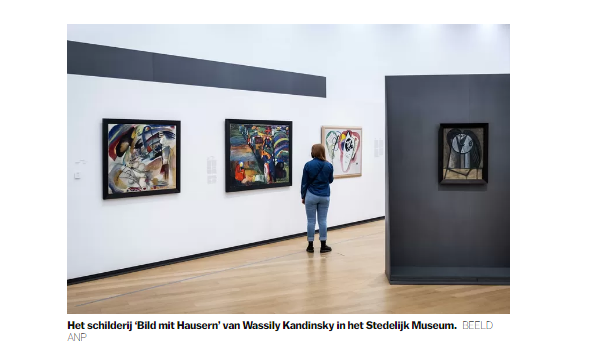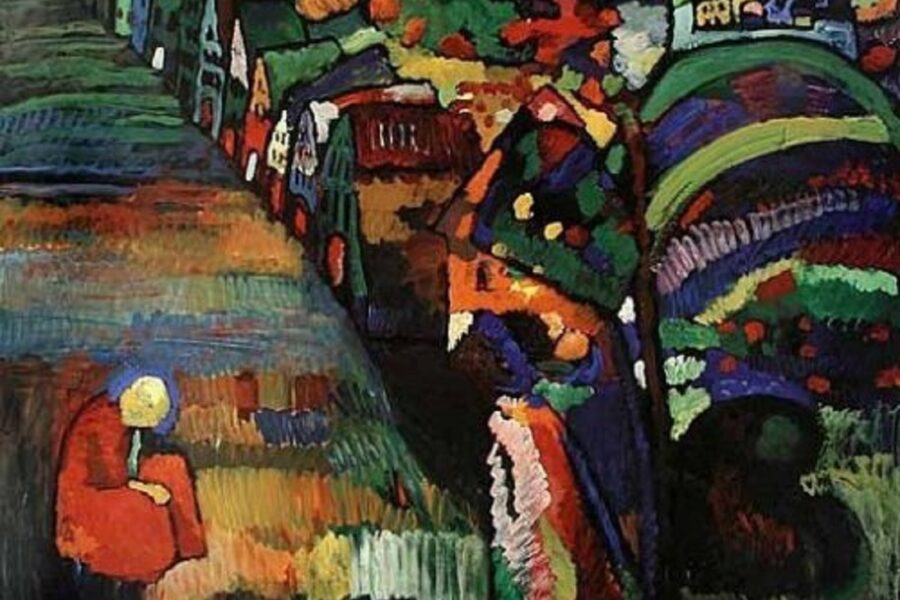[THIS IS AN ENGLISH TRANSLATION OF THE ORIGINAL DUTCH ARTICLE “Stedelijk Museum wil schilderij Kandinsky niet afstaan” PUBLISHED ON THE HET PAROOL WEBSITE ON OCTOBER 29, 2020] (https://www.parool.nl/amsterdam/stedelijk-museum-wil-schilderij-kandinsky-niet-afstaan~bcdfe2e4/)
The Stedelijk Museum is neither willing to hand over a painting by Wassily Kandinsky nor to negotiate possible compensation for the Lewenstein heirs. In their view, the Restitutions Committee correctly ruled in 2018 that the heirs are not entitled to the 1909 painting Bild mit Häusern , because the painting was not stolen.
Hanneloes Pen 29 October 2020 , 14:41

On Thursday morning, the Lewenstein heirs demanded the painting back from the museum during legal proceedings.
“The Restitutions Committee performed its task properly in 2018. There is no reason to revisit or redo the work. They are knowledgeable and able to assess the case. There are also no indications that the painting was stolen, ”says lawyer Paul Loeb on behalf of the Stedelijk Museum and the City of Amsterdam.
According to the Restitutions Committee, the sale of the painting must have been ’caused by the deteriorated financial circumstances’ in which Lewenstein was already living before the German invasion.
The heirs’ lawyers dispute that. “The Lewenstein family’s financial situation was no reason to sell the painting,” said lawyer Axel Hagedorn on behalf of three heirs. “In September 1940 there was a positive balance of 110,000 guilders. Robert Lewenstein, with an income of more than 5,200 guilders a year, was one of the five percent taxpayers with the highest incomes. ”
160 guilders
According to Hagedorn, the then director David Röell of the Stedelijk Museum made price agreements with the Jewish art collector Salomon Slijper in 1940 about the two Kandinsky paintings offered for auction, whereby they would not outbid each other. The painting was bought by the Stedelijk for 160 guilders. “But there is no evidence that this amount actually ended up with the alleged sellers. There must be a burden of proof. ”
Office colleague Simon van der Sluijs described the situation of Lewenstein, who ran a sewing machine shop on the Dam: “Immediately after the invasion, the Germans started looting art. Pressure and coercion and the justified fear that lived among the Jews were used. That fear has not passed by the Lewenstein family. The Nazis marched past their offices on Dam Square. To label the auction of works of art belonging to the Lewenstein family as voluntary is bizarre. ”
Partiality and Conflicts of Interest
According to the heirs’ lawyers, there is also an ‘appearance of partiality and a conflict of interest’ among three to four of the seven members of the Restitutions Committee. They have a relationship with the Stedelijk Museum, are members of the Stedelijk Museum’s Business Club, and work at an office that sponsors the museum.
However, according to lawyer Loeb, there is no question of a conflict of interest or partiality. None of the four had a financial interest in the museum or was ever employed by the museum.
Rein Wolfs, director of the Stedelijk Museum, said at the hearing: “I do not recognize that the museum acted obfuscatingly. The museum is transparent and careful. It is aware of its responsibility in this matter.”
The ruling will follow on December 16.


